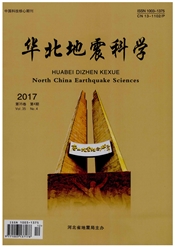

 中文摘要:
中文摘要:
为了更有效地利用地下水位观测数据开展地震预测,需要排除其它因素对地下水位的干扰。降雨、气压和潮汐是影响地下水位的3个重要的非构造应力因素,对此建立状态空间模型以提取与地震有关的水文异常。这个模型把观测到的地下水位时间序列分解为气压响应、潮汐响应、降雨响应、噪声因子和水位残差5个因子,运用状态空间分析方法,从地下水位的实际观测数据中分解出气压、潮汐和降雨等主要的非构造因素对地下水位的影响,从而得到构造应力影响下的地下水位数据,以便于提取与地震活动有关的异常信息。
 英文摘要:
英文摘要:
To make full use of observation data, get rid of interference factors, we build a state space model to extract the hydrology abnormal that relevant to the earthquake. This method can decompose observed groundwater level into five components: atmospheric pressure, tidal, precipitation responses, observation noise, and residual water level. Using state space analysis method, we could obtain the water lever data in the Non-tectonic stress affects, and then, find the law of earthquake evolution through analysis the relations between the trend of the new water lever data and the earthquake activity.
 同期刊论文项目
同期刊论文项目
 同项目期刊论文
同项目期刊论文
 期刊信息
期刊信息
